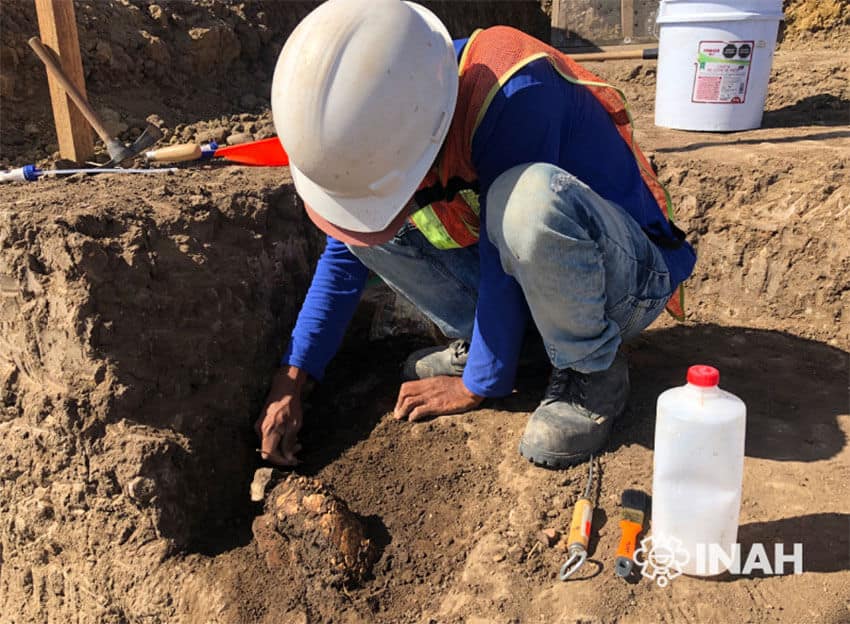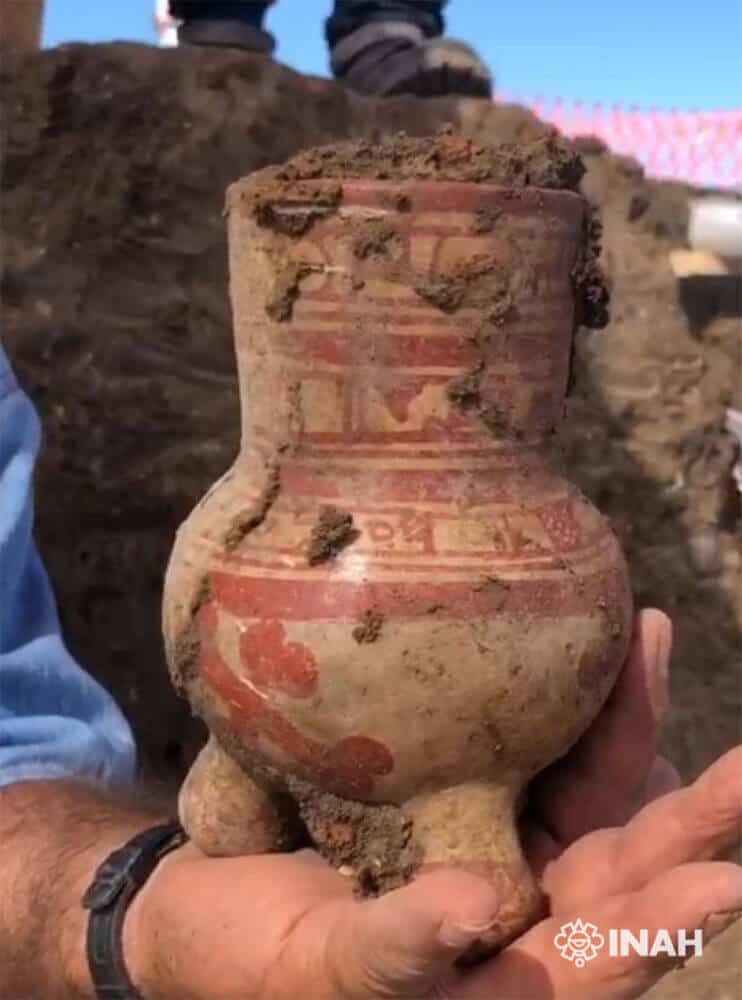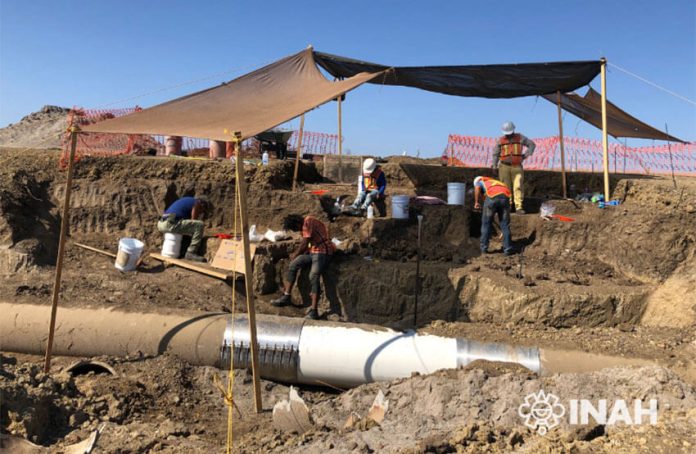A pre-Hispanic archaeological site with graves containing human bones and high-quality ceramics has been discovered in Mazatlán, Sinaloa.
Inhabited by members of the Aztatlán culture some 1,000 years ago, the site was discovered on a hillock earlier this month during paving and infrastructure construction work in the Pacific coast city.
“The site was found by workers when a pipe broke, exposing human remains,” the National Institute of Anthropology and History (INAH) said in a statement Saturday.
Víctor Joel Santos Ramírez, an archaeologist with INAH Sinaloa, said that a human settlement was established on the hillock, which is located near an estuary. Its elevated location allowed it to avoid flooding, he said.

Human remains were interred in graves on the hillock, whose surface was covered with crushed shells. Temporary structures were built above the graves.
Santos said that an Aztatlán-style ceramic urn of excellent quality was found in one of the graves. Archaeologists have also uncovered two other ceramic vessels, an Aztatlán-style pipe and human bones. The bones are in poor condition due to the natural characteristics of the soil in Mazatlán, INAH said.
Santos said that “a grave with these characteristics – beneath a shell floor and accompanied by high-quality ceramics – hadn’t [previously] been found in Mazatlán.”
The ceramic artifacts are believed to have been made between A.D. 900 and 1,200. The development of the Aztatlán culture began in the area now occupied by northern Nayarit and southern Sinaloa in the 10th century, according to Alfonso Grave Tirado, another archaeologist with INAH Sinaloa.

Grave said that it’s highly likely that more evidence of an important ancient settlement will be found in the same area where the graves and ceramic relics were found. There’s no doubt that there are other archaeological sites in the area, he said.
INAH is seeking an agreement with the Mazatlán municipal government to preserve the recently-discovered site as an archaeological reserve where additional excavation work can take place.
No more than 10 archaeological sites have been discovered in Mazatlán, Santos said, explaining that the urban sprawl of the city has hidden many others. Authorities are rarely advised when such sites are uncovered, he added.
Mexico News Daily
